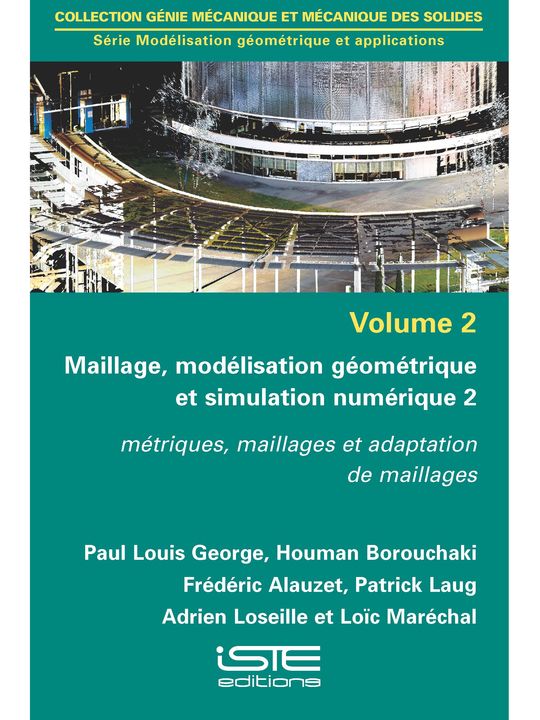Triangulations then meshes are at the heart of many problems relating to a variety of scientific disciplines - in this case numerical simulations.
In volume 1, the theoretical foundations were laid relative to triangulations, shape functions of finite elements and their interpretations as geometric tessellations. This enabled the building of tools allowing for the geometric modelling of any object.
In volume 2, these elements are used to address meshing problems in their different variations. The link is made between metric and ex-post error control. Meshing methods are then revisited through these metrics, which show their capacities in handling meshing construction and adaptation problems, including in the case of high-order and large-size meshing, leading to the examination of parallelisation questions. Industry-type examples demonstrate the relevance of the approaches proposed.
Three questions to Paul-Louis George, head of the Gamma3 project team
- Can you tell us how the idea of writing this series of books came about?
First of all, we need to remember that our last book on meshing dates back to 2000, with an update in 2008. Another work was also written by a colleague, but under a relatively classic approach and, ultimately, quite distant from concrete industrial concerns.
To this we can add the pleasure I get from writing, the desire to "mark the occasion" in our specialisation and, finally, the willingness of my co-authors to take part in this adventure. All of this combined with recent progress made in the field - in particular we can mention curved elements and high-order methods but also what HPC can bring to this field - meant that, at the end of the day, the idea of this series became obvious to us all!
In the end it proved impossible for the first draft - originally designed to be a single volume - to be done that way: we needed at least 800 pages! And so we were on our way to at least two volumes...
- Who are your books aimed at? Do you need to be a specialist in meshing to understand what it is about?
Even if it is definitely scientific literature, we nonetheless did our best to be as educational as possible so that the readers gradually arrive at very advanced concepts without too many problems. And, as we wanted to avoid - at all costs - a scholarly array of theorems, we opted for a very explanatory book.
Moreover, we deliberately included an element of subjectivity in our words in order to put forward the methods we do not support. I personally think that - although rare in books - these opinions can only help the readers to form their own ideas.
- Volume 2 has just been released, what comes next?
Once our two volumes were finished, the question was obviously asked: is there room for a third? By noting that our students, among others, master force concepts but have difficulties seeing - in practice - how to apply them, the third volume therefore quite naturally became obvious... And the adventure continues!
I feel that the presence of the French language in scientific literature is essential, so it is important to specify that our books are published in French by ISTE but that an English translation is available from Wiley.
The authors
- Paul-Louis George , Inria research director, is already the author of several works on meshing. He is considered to be the father of meshing in France.
- Houman Borouchaki , professor at the University of Technology of Troyes (UTT), is an expert in meshing problems.
- Frédéric Alauzet, Adrien Loseille and Patrick Laug , researchers at Inria, each have specific expertise on and around meshing: mesh adaptation, error estimators, problem-solving methods and remeshing methods for the first two, geometric modelling and curve and surface mesh generation for the third.
- Loïc Maréchal , who has long been a collaborator at Inria as an engineer, is a major reference on hexahedrons.
